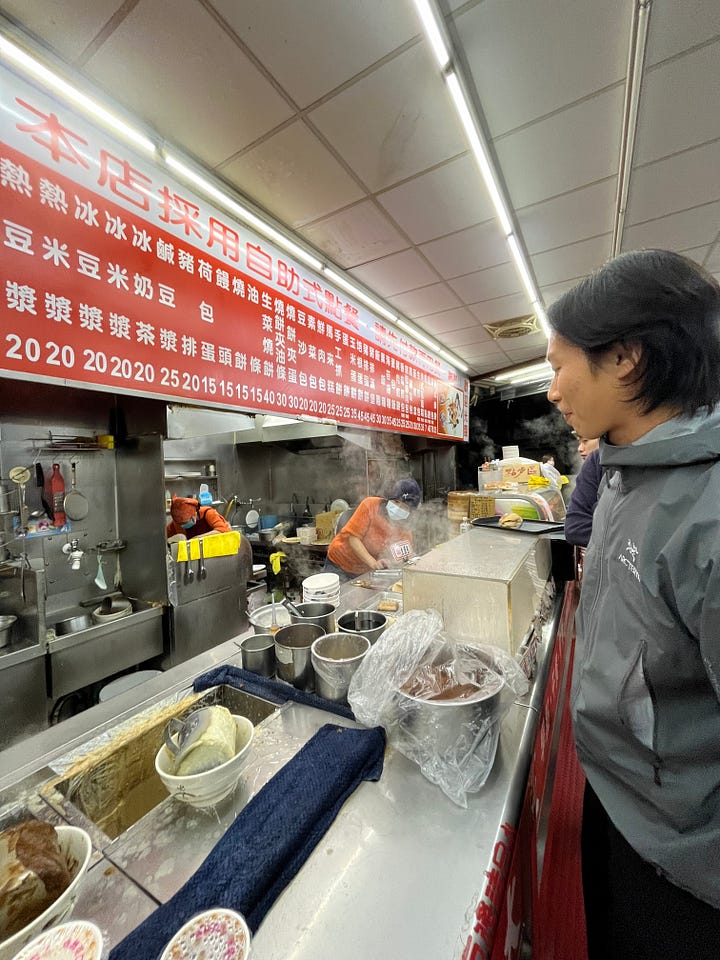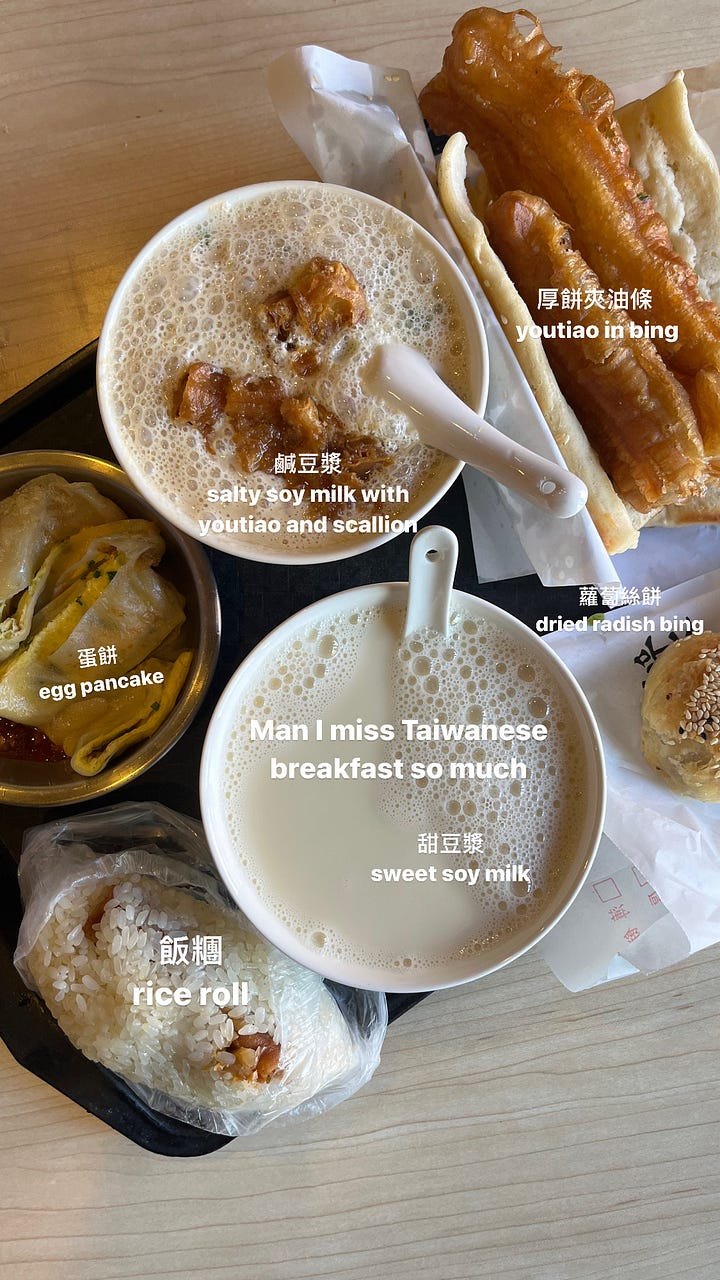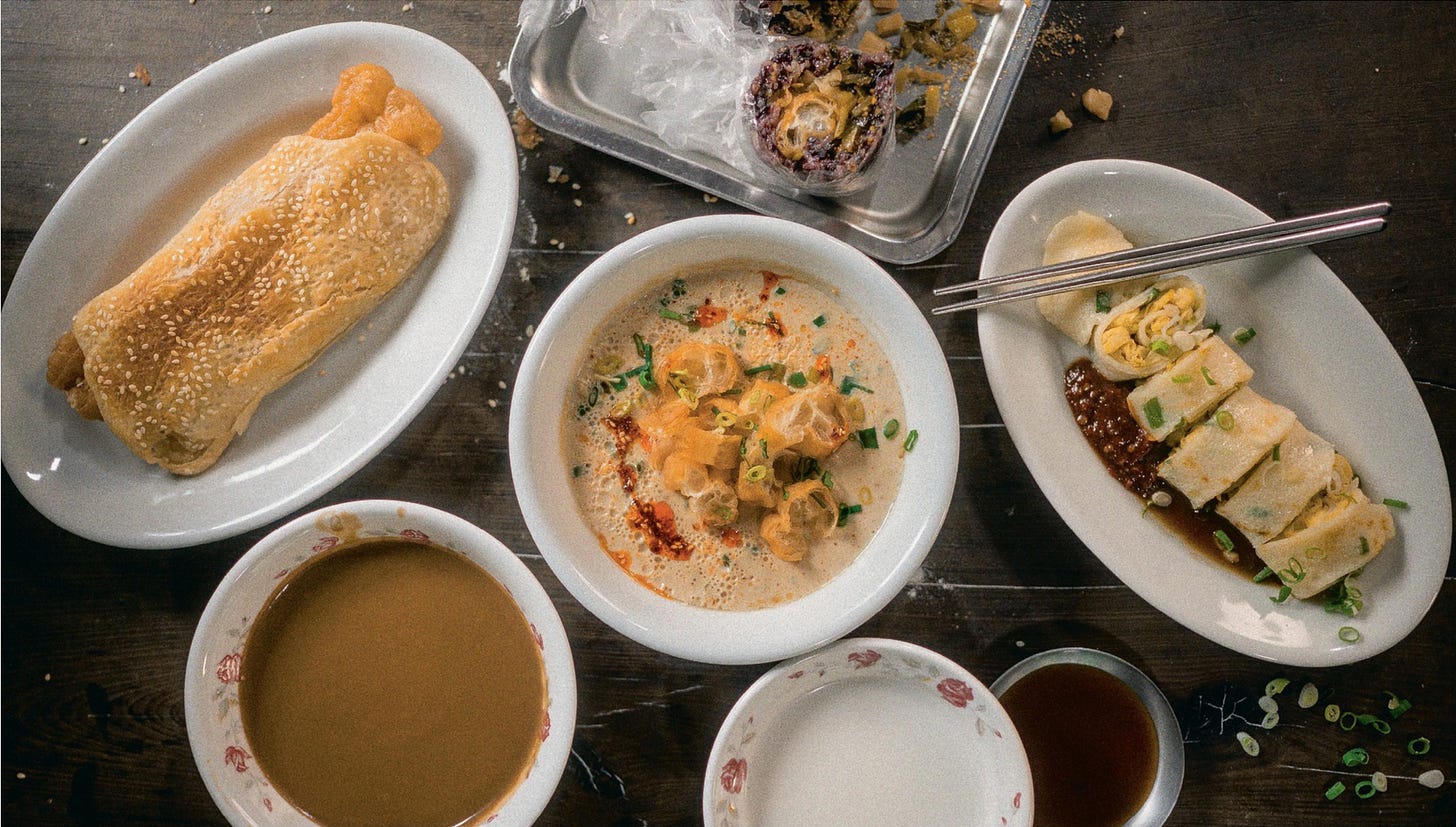Hi friends— I’m back in the United States for a couple weeks! Currently in LA to see family and friends, and heading to Portland tomorrow to pack up my bike and sell some furniture (also excited to revisit my old favorites and new restaurants/bars that have popped up, will be sharing my Portland recs soon!)
For this week’s newsletter, I’m taking a break from my usual Chinese food dispatch to share a new book that I absolutely love, A-Gong's Table: Vegan Recipes from a Taiwanese Home, by George Lee, fresh on shelves April 30, 2024 with Ten Speed Press.


George (aka @chez.jorge) and I met in person in Berkeley when he was still in school. We became good friends and I got the chance to write a blurb for his new cookbook, which is one of the most artful, intentional and interesting releases I’ve read this year, accompanied by street photos by Taiwanese photographer Laurent Hsia. Honestly it feels more like an archival/film photo book and a zine than cookbook (George and I’ve had quite a few conversations about the traditional “look” of commercial cookbooks and writing style and our weariness of the same-old glossy hardcover, and I’m glad to see books published with a fresh vision).
I wrote, regarding the book: “Beyond the thoughtful canon of recipes, A-Gong’s Table captures the story of a place, revealing snapshots that feel fleeting and timeless all at once. This is a beautiful love letter to Taiwan and a quietly uncompromising work of documentation.”
Truly a labor of love. Speaking of fleeting moments, this January I was back in Taipei cleaning out my stuff (I lived there for a year and left a storage unit of things behind) and got to eat my fill of Taiwanese breakfasts. George introduced me to one of his favorite haunts at night, Ruian Soy Milk (瑞安豆浆大王) near the Da-an MRT stop. Like many breakfast shops in Taiwan, this place is open 24 hours with a gloriously traditional menu. My favorite is savory soy milk, which is another version of douhua, soy milk stirred with rice vinegar until gently curdled.


Some other favorite recipes I’ve saved from the book: Preserved Radish Omelet, Taro Rice Noodle Soup, Alkaline Rice Dumplings, Wan ke (Bowl Rice Cake), Golden Kimchi, Winter Melon in Soybean Sauce, Pumpkin Fried Rice Noodles, and Four Tonics Soup.
Savory Soy Milk 鹹豆漿
xiándòujiāng | kiâm-tāu-ni
Serves 1
When seasoned with savory ingredients and curdled with rice vinegar, soy milk can almost mimic silky steamed eggs. The key here is balance. Use just enough rice vinegar to coagulate the soy milk and keep a hint of its fragrance, but not enough to sour it. Season with just enough salt, soy sauce, and preserved mustard to bring out the natural flavors of the soy milk, but not enough to overpower it. The texture you get depends on your soy milk: the finer and more concentrated it is, the more custard-like it becomes. Top with vegetarian meat floss for a nice extra touch.
By George Lee (shared with author’s permission)
1 tsp minced preserved mustard 榨菜
1 small scallion, finely chopped
½ tsp golden granulated sugar
¼ tsp salt
1 tsp light soy sauce
¾ tsp rice vinegar
¼ tsp sesame oil 香油
¼ tsp Chili Oil
1¼ cups unsweetened soy milk
1 (3-inch) piece Fried Crullers 油條, cut into 4 pieces
In a small bowl, add the ingredients one by one in this order: preserved mustard, scallion, sugar, salt, light soy sauce, rice vinegar, sesame oil, and chili oil (if using).
In a small saucepan over medium-high heat, warm the soy milk, constantly swirling or stirring it to prevent the bottom from burning. Once the soy milk boils, pour it quickly and all at once (or from a relatively high point) into the serving bowl to make sure the vinegar and seasonings distribute throughout. The soy milk should set, almost instantly, into a soft custard.
Place the fried crullers on top. Serve immediately.

On 早餐店 zăocāndiàn, Taiwan’s ubiquitous breakfast stalls:
On today’s Taipei streets, you won’t walk long before coming across a zăocāndiàn (breakfast stall). Every neighborhood has their own, a hub for soy milk and hearty, wheat flour–heavy pastries. It’s the epicenter of the neighborhood’s ecosystem, a place where people start—and sometimes end—their days. You sit at the stall in the morning sky’s dim ambiance, take a sip of something warm, watch the clouds part, and the world become beautiful.
Even though many of today’s iconic Taiwanese breakfast items contain wheat, their popularity is a more recent development. Traditionally, breakfast consisted of mostly rice and rice-based dishes. When the democratic Republic of China (ROC) government fell to the communists in 1949, the ROC government leaders and 1.2 million mainland Chinese (mostly northerners) fled to Taiwan and brought their appetite for wheat flour–based dishes with them.
A few years later, In 1954, US president Dwight Eisenhower signed Public Law 480, which allowed Taiwan to purchase flour cheaply from the United States. The new ROC government was also incentivized to push the new grains on the Taiwanese to remind them of pre-communist China’s glory. There was suddenly both a demand and supply for it, and mainlander cooks started crafting and selling the wheat flour–based foods they knew from home. Chinese technique cross-pollinated with local produce, and a new genre of Taiwanese-style wheat flour–based foods was created. Due to industrialization, fewer people were cooking and eating at home in the morning, and these wheat-based foods were cheap, filling, and convenient. They soon prevailed as the breakfast items of choice. Breakfast stalls began to pop up all over the island, serving the traditional breakfast we see there today.
By George Lee (shared with author’s permission)
Grab a copy of George’s cookbook, A-Gong’s Table: Vegan Recipes from a Taiwanese Home, here.







Does the recipe require homemade unsweetened soy milk, or will store-bought with all its extra binders/etc work?
Have been enjoying 鹹豆漿 ever since I found out about it. I’ll try pouring it from higher up next time. Mine wasn’t as frothy and the curds were smaller